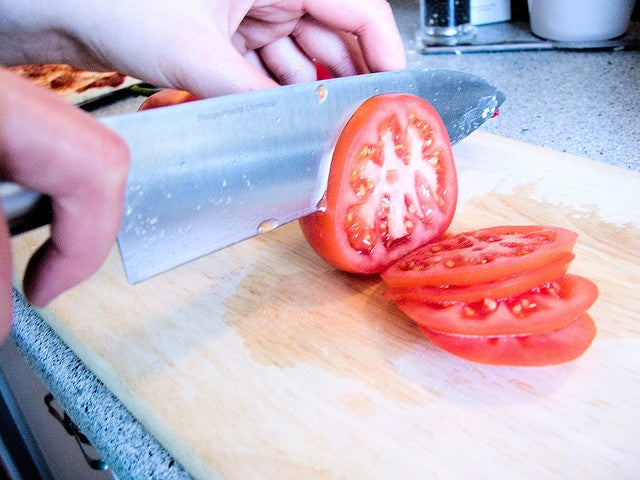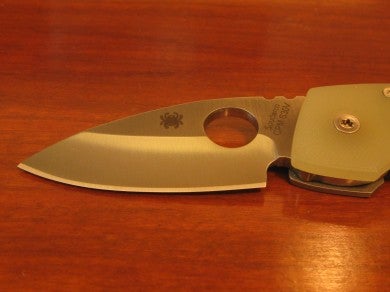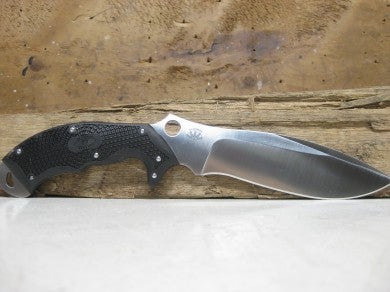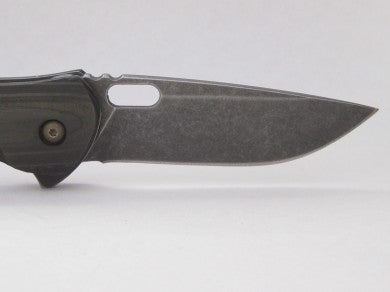Gear Theory: Understanding Knife Sharpness
Tony Sculimbrene 12.26.14

It might seem funny to dedicate an entire article to sharpness, but it’s the heart of a knife. And sharpness is not as easy a concept to define as you might think.
In the most basic sense, sharpness is how acute the edge angle is on a knife, but that only tells you so much. Two different steels with two different heat treats can have the same edge angle and perform radically differently. We have a bunch of numbers that try to equate to sharpness–edge angle, HRc, TCC (from the CATRA test), but none of these capture the concept of sharpness perfectly. So how should you as a user think about sharpness?
The handiest way to think about sharpness is this: a sharper knife allows you to make equal cuts to a material with less effort than a less sharp knife.
Why is this important, aside from bragging rights? Knives are tools, and as tools there is an associated set of skills that go with them. The sharper the knife, the easier it is to perform tasks and let better skill carry through.
For example, a few years ago a video went viral on the Internet demonstrating insane knife skills. The world famous chef Jacques Pepin deboned a chicken in under 2 minutes. It’s not just that he takes out the bones, but he does so leaving a virtually perfect chicken behind. You can see in the video that Chef Pepin has both bonkers knife skills, making surgically precise cuts, and wickedly sharp knives. His sharp knives let him do tasks he couldn’t do otherwise, and they also let his skills shine through.
Sharp knives are also safer as it takes less effort to make the same cut, thereby reducing the risk of slippage or misdirected cuts due to the application of too much force. A sharp knife is truly a safe knife.
Useful sharpness is really about three things: geometry, heat treat, and steel. Because sharpness is in the strictest sense just the edge angle, we need to go beyond that to figure out how to evaluate the usefulness of that edge angle, and this is where geometry, heat treat, and steel come in. I am going in order of importance, from most to least. A knife with bad geometry can’t be saved by a good heat treat or mind blowing steel.
Geometry
Most knives have at least two ground sections on a blade: the main grind (that part of the grind that really hogs away material) and the cutting bevel (that final terminal angle that does the actual cutting). There are some knives, like scandi grinds, zero grinds, and convex grinds, that have a single main grind that goes all the way to the edge.
Certain geometries perform different tasks better. For hard use I much prefer a convex grind. It’s not as difficult to maintain as a scandi or zero grind, but it is just as tough or tougher. For hacks, chops, and thumps, the convex edge is the way to go.
For EDC tasks I like a hollow grind much, much better than anything else.
Nutnfancy pushed flat grinds for a while on the (correct) theory that they wouldn’t bunch up in material as easily as a hollow grind and he is right. But the chance that this issue arises in an EDC knife is pretty slim. In a fixed blade, especially a chopper, this is an issue, but not in an EDC blade. After all, most of my EDC tasks are box opens, quick slices, and food prep, each of which brings the chance of a binding issue down to about zero.
Many of the best slicers feature thin blade stock, with my ideal thickness being less than 1/8th of an inch for an EDC knife (much testing as show me that I like 3/16 of an inch for hard use fixed blades).
Being forced to get steel down to an edge over less than an inch or so (typically found in folders) is very hard if you start with crowbar thick stock.
For hard use tasks, edge stability is more important than pure keenness, so I’d opt for a convex grind. For EDC tasks, keenness is important, which is why I like a thin stock hollow ground blade.
There is an argument about the value of a chisel grind. I like them, but Emerson, the main proponent of a chisel grind, grinds them on the wrong side. By that I mean, unlike a wood chisel, which is a cutter of historic proportions, Emerson knives don’t “register the cut” with the flat side of the blade. Instead it is the profiled side that registers the cut, and that gives rise to some accuracy issues.
Heat Treat
In many ways heat treats are the secret sauce of the knife world. Paul Bos, in collaboration with Buck, has been issuing great knives with lesser steels thanks to a proprietary heat treat.
I am confident, given my experience with these blades, that they are better than other blades with the same steel. Heat treat is basically a process that controls how a blade cools from molten steel to a hardened blade. There are many ways to do it. Most steel recipes have a precise process for heat treat, but the reality is that in the modern market almost every steel is heat treated well. Heat treats only make news when they stink or when people think they stink.
In short, heat treat is important, but most do it very well. Only the Bos heat treat is worth more as I have found it to be superior in real world use.
Steel
As an avowed steel junkie, I’d love to tell you that this is the most important part of a knife, but alas, it’s not. I have had many good knives with merely okay steel because they got the geometry and heat treat right. The Al Mar Ultralight Hawk is one of those knives.
But, if you want a knife that truly attains pinnacle performance, steel is a necessary component. I wrote a lot about steels here.
In my mind there are a few truly superior “high sharpness” steels. I like M4 and ZDP-189. I have found some of the high carbon steels very good, such as those found on Ahti Knives (made by Lauren Metalli). I am entranced with the iron sands steels: Super Blue and White steels. Both take and hold an insane edge. I also like SG-2 steel. Finally, I am a fan of M390 and 20CV, which have very similar chemistries. Of these steels only ZDP-189 and SG-2 have good corrosion resistance. Hardness, which leads to sharpness (allowing for a steeper cutting bevel), usually comes at the cost of corrosion resistance.
Conclusion
Getting those buttery smooth cuts or being able to flick paper into tiny triangles is a fun demonstration of sharpness, but having a keen edge is critical to using a knife safely and accentuating your knife skills. Understanding the blade’s geometry, heat treat, and steel can make a huge difference. If you can only afford to emphasize one trait for sharpness, focus on geometry.


